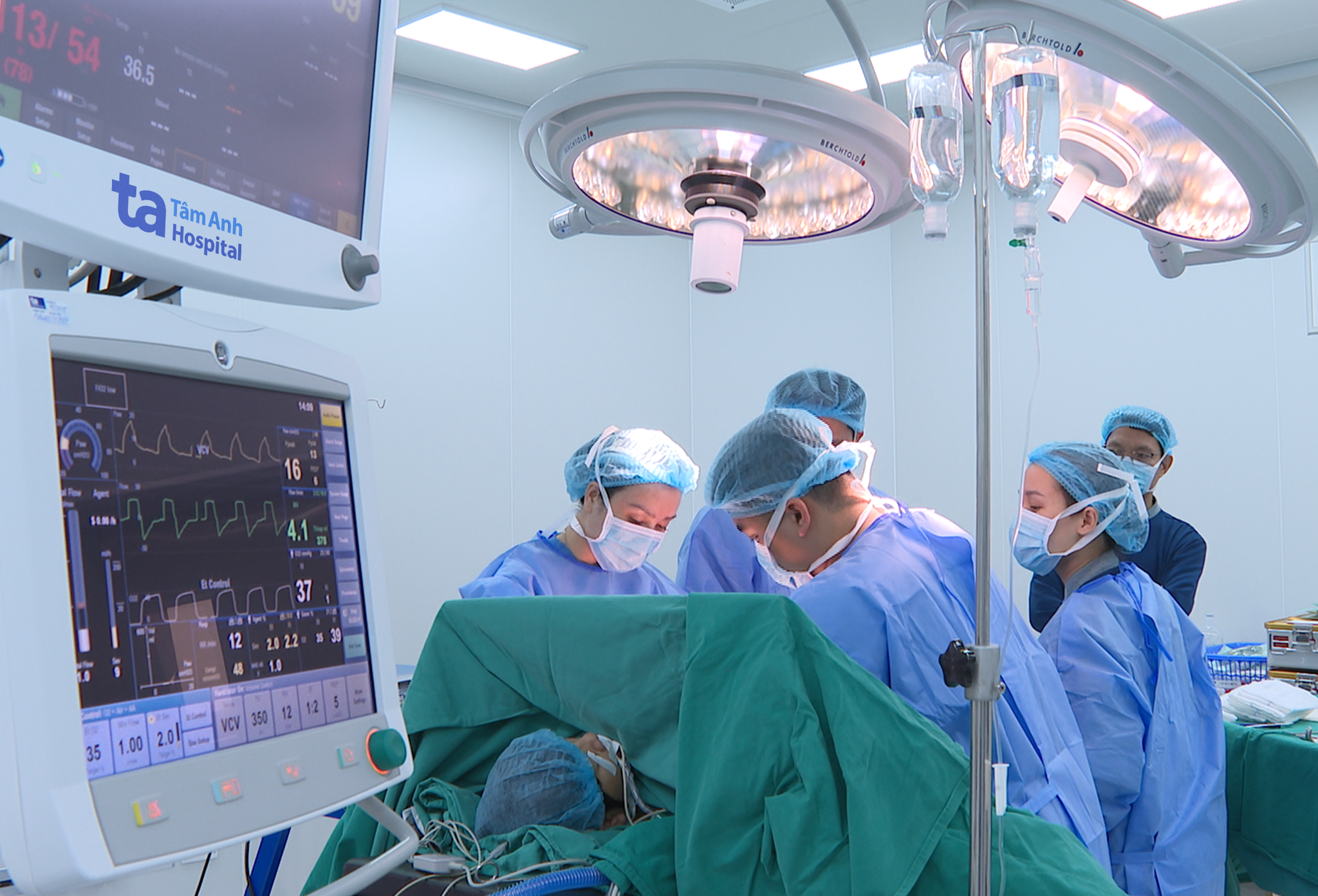Hong underwent breast augmentation and lift surgery in 2021, with initially stable results. Recently, her right breast began to enlarge gradually. While painless, it became raised and exhibited redness and heat around the nipple, accompanied by hardened scar tissue pulling around the nipple area. An MRI scan at Tam Anh General Hospital in Hanoi revealed a mass in her right chest wall, infiltrating the head of the 4th rib on the right side. The 4th rib on the left side also showed blurring, leading doctors to suspect bone loss due to tumor invasion.
A consultation with specialists in thoracic-vascular surgery and cosmetic surgery confirmed the presence of a mass in her right chest, located directly behind the breast implant. Given this location, doctors suspected the tumor was a complication of the breast augmentation. "If the tumor had pre-existed or was unrelated to the implant, it wouldn't be situated directly behind it but would be separated by the fibrous capsule that forms around the implant," said Dr. Hoang Thi Phuong Lan from the Department of Orthopedic Trauma.
According to Dr. Lan, the desmoid tumor that formed in this case was a reaction to the foreign body (the implant) being incompatible with the body, combined with infection and bleeding during the implant procedure. This caused the connective tissue cells to undergo DNA structural changes and proliferate abnormally, leading to inflammation and the formation of a fibrous tumor. The fibrous tissue gradually thickened and hardened, pressing tightly against the chest wall and invading deeper into the surrounding tissues, eroding the bone and affecting nearby organs.
The patient underwent surgery to remove the entire tumor, followed by restorative treatment and breast reconstruction. The surgical team found a mass in the right chest wall, measuring approximately 7x8x10 cm, located beneath the breast implant. It had invaded and destroyed the 3rd and 4th ribs and the patient's pleural membrane. The surgeons completely removed the tumor along with all the damaged bone and surrounding tissue. Due to the eroded bone structure, the team had to reconstruct the chest wall using a titanium patch and fixation screws. They also placed a pleural drain to manage fluid and control bleeding post-operatively. The implants were removed from both breasts, along with the surrounding fibrous capsules and the contracted fibrous tissue causing breast deformity.
In Hong's case, the tumor grew silently behind the implant without noticeable pain, leading to late detection, according to Dr. Lan. Without intervention, the tumor could have continued to grow, destroying the chest structure, weakening the chest wall, and impacting respiratory function and aesthetics. Desmoid tumors have a high recurrence rate if not completely surgically removed.
 |
Surgeons remove the breast implant and the tumor from Hong. Photo: Tam Anh General Hospital |
Surgeons remove the breast implant and the tumor from Hong. Photo: Tam Anh General Hospital
Hong will require multiple corrective procedures to reconstruct the shape of both breasts and address the scarring, asymmetry, and tissue loss caused by the implant removal and tumor resection. According to Dr. Lan, complications related to breast implant surgery are rare but still pose a potential risk. Before undergoing breast augmentation, patients should undergo thorough examinations of their breast tissue, chest muscles, and ribs, and any underlying soft tissue lesions should be ruled out. Regular follow-up appointments are essential after surgery for early detection of abnormalities such as capsular contracture, fibromas, or other complications.
If symptoms such as breast hardening, protrusion, redness, heat, or asymmetry occur, prompt consultation with a specialist is crucial to determine the cause. Delayed detection can allow even benign tumors like desmoid fibromas to grow to a point where complex, costly, and risky surgery is necessary.
Thanh Ba
*The patient's name has been changed.












